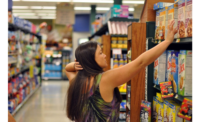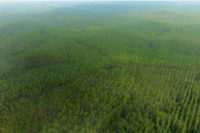Boosting Sustainability and Your Bottom Line with Folding Boxboard

Folding boxboard (FBB) innovation is changing the global standard. As this on-the-rise packaging technology continues to become more prevalent globally and in the North American market, printers must be aware of both why the market is on the up and up, and how they can best adapt to this technology to give their package printing customers the end-results they desire.
FBB is a multi-layer paperboard product currently most prevalent in both the European and Asian markets. It is used for a range of cosmetic, food, pharmaceutical and luxury goods packaging, as well as for greeting cards and paperback book covers. The manufacturing of FBB utilizes intense heat, steam and pressure to adhere layers together when the pulp is wet. Starch is added to create a bond with pulp and lignin. The final stage involves laying down a water-based coating, making the smooth surface of the sheet ready for most any graphics and finishing processes.
According to Future Market Insights (futuremarketinsights.com), the global folding boxboard market is expected to reach a value of about $12.25 billion in the year 2020. While the North American market has traditionally been dominated by the use of Solid Bleached Substrate (SBS), SBS demand has been decreasing at a rate of eight percent between the years 2011 and 2016.
What’s Driving Demand?
The rise of FBB in North American and across the globe has been driven by consumer demand for environmentally sustainable solutions. According to the Asia Pulp & Paper (APP, asiapulppaper.com) Paper & Packaging Consumer Trends Survey, compared to five years ago, the sustainability of paper-based packaging today is either much more or more important to half of all consumers (50 percent).
FPP packaging delivers on this consumer preference because it saves more energy and has a lower environmental impact than most other packaging solutions. It also provides a solution to global market demands for use of recycled goods.
Recycled paper products are widely considered a gold standard for many companies, but for sanitary reasons, food, beverage and hygiene product packaging needs to be made from virgin fibers. FBB makes it possible to use renewable fibers in the process – it can feature recyclable fibers sandwiched between a layer of virgin fiber on each side. Externally the product will not appear different but will contain sustainable properties.
Additionally, reduced pulp demands for FBB manufacturing means less trees are needed for the same end usage as SBS packaging. APP China research found that every three metric tons of FBB saves one tree.
Beyond sustainability, FBB is also a cost-effective product that can help improve the bottom line. The middle layers of FBB are lighter and less dense, leading to reduced weight and ultimately lower shipping costs throughout the supply chain. FBB also has an improved yield advantage – one ton of FBB provides a range of 18 to 23 percent more sheet than 1 ton of SBS.
How Printers Can Successfully Incorporate FBB into Their Business
Due to state-of-the-art paperboard manufacturing, FBB is highly formable and enables intricate structural designs, die-cutting and radius edges. With slight die-cutting and scoring die adjustments, printers are able to take advantage of FBB’s smoother, consistent density and tighter, higher stability. The product has a superior print surface that allows for the printing of a finer dot. The rigidity of the boxboard holds shape, leading to less warping and better score properties.
By understanding the attributes of FBB and printing adjustments required compared to other products on the market, printers are able to maximize the benefit of this increasingly popular paperboard.
Looking for a reprint of this article?
From high-res PDFs to custom plaques, order your copy today!







